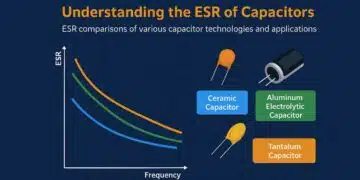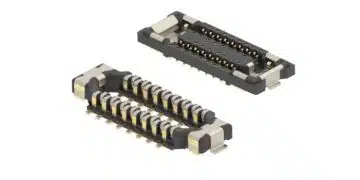Robert Feranec in this video discusses with Ali Shirsavar, Biricha how to calculate and choose output capacitor for switching power supplies.
Calculating and Selecting Output Capacitors for Switching Power Supplies
This video provides an in-depth exploration of methods for calculating and selecting output capacitors for switching power supplies. Drawing from insights shared by Robert Feranec and Ali Shirsavar of Biricha, the video identifies key considerations in capacitor selection, including voltage dip requirements, ripple reduction, and the distinct characteristics of ceramic capacitors and electrolytic capacitors.
Content Summary
1. Introduction
Switching power supplies are widely utilized in modern electronic devices due to their efficiency and performance. Among the critical components within these systems is the output capacitor, which plays a pivotal role in maintaining output voltage stability and minimizing ripple.
2. Importance of Output Capacitors
The primary functions of output capacitors in power supplies are:
- Reducing Output Voltage Dip: Mitigates voltage drops when sudden load changes occur before the control loop compensates.
- Minimizing Ripple: Smoothens the ripple current from inductors, crucial in topologies like buck converters.
3. Calculating Capacitor Values
3.1 Capacitance Value Based on Voltage Dip Requirement
The allowable voltage dip (undershoot) and the time until the control loop responds are specified in design requirements. The key equation for minimum output capacitance is:
Where:
- Cout = capacitance of the output capacitor
- ΔVout = allowable voltage dip
- ΔIstep = current load step
- Tdip = time period during the Vout will dip
Example calculation:
- A 5V, 2A supply with a 200 kHz switching frequency.
- Allowing 5% dip (250mV) and a 50% load step (1A).
- Time for control loop response = 5 switching cycles (~25 µs).
This results in a minimum required capacitance of 100 µF, adjusted to 150 µF considering a 30-50% safety margin.
3.2 Ripple Requirements
- Ceramic Capacitors: Low ESR allows ripple calculations based predominantly on capacitance.
- Electrolytic Capacitors: High ESR means ripple is mainly influenced by ESR rather than capacitance.
For ceramics, capacitance calculations consider ripple current and switching frequency. For electrolytics, Ohm’s Law (V = IR) helps determine maximum allowable ESR.
4. Practical Demonstrations
Real-world measurements illustrate the behavior of different capacitors under load conditions. Observations include:
- Ceramic Capacitors: Exhibit low ripple (~6 mV) with pseudo-sinusoidal waveforms.
- Electrolytic Capacitors: Show higher ripple (~130 mV) with triangular waveforms due to dominant ESR effects.
5. Selecting the Right Capacitor
When choosing capacitors:
- Ensure capacitance meets the worst-case scenario between voltage dip and ripple requirements.
- Consider voltage rating with a 20-30% margin for electrolytics and 100% for ceramics.
- Verify ripple current ratings, adjusting for RMS values with suitable safety margins.
6. Tools and Software
Software tools like Biricha WDS streamline these calculations, incorporating control loop design and capacitor selection based on real-time parameters.
7. Conclusion
Understanding the principles behind capacitor selection aids in designing robust switching power supplies. Whether calculating manually or using specialized software, consideration of voltage dip, ripple, and component characteristics ensures optimal performance.
Related topic links
- Buck Converter Design and Calculation
- SEPIC Converter Design and Calculation
- Boost Converter Design and Calculation
- Flyback Converter Design and Calculation
- Fly-Buck Converter Explained and Comparison to Flyback
- LLC Resonant Converter Design and Calculation
- Switching vs Linear Power Converters Compared
- DC-DC Converter Basic Characteristics and Formulas
- Input filters for DC/DC converters
- Selection of Storage Inductors for DC/DC Converters
- Selection of Capacitors for DC/DC Converters





























